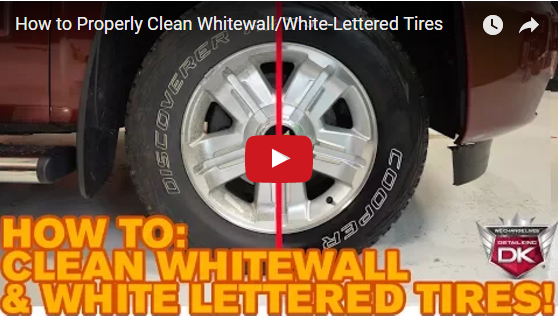Whether you were in an accident or something similar, it is possible to get tire marks on your car, which can be tricky to get off without the correct method.
Spotting these tire marks on your car is not pretty, and it can severely hinder or ruin your vehicle’s paint job if it is not taken care of promptly. You also must be careful not to ruin the paint with the wrong cleaning solution.
There are six ways to get tire marks off your car. They include using a magic eraser, using WD-40 and a towel, using mild soap and a cloth, using an adhesive removing, using Racing Rubber Remover, or using a polishing and waxing compound. All options have a specific purpose, but they work well.
Car tire marks are a pain to remove, but with the right process, it can be easier. They are usually left on your car's paint and can be challenging to remove with a washcloth or bucket. This guide will show you how you can get rid of those nasty tire marks on your car and even the interior of the car too.
The tire marks on your car are unsightly and damage the paint. They can also leave a sticky residue, eventually leading to more problems. If you want to get rid of them, below are some tips for you to try.
Tire marks on cars are unsightly, but they can be easily removed with the right tools and a little elbow grease. The biggest concern is keeping your car’s paint intact when removing them.
When you're driving, you often see tire marks on the road. You may not be able to get the tire marks off your car, but there are a few ways to remove them.
The most effective way to remove tire marks from your car is by using a squeegee or a cloth with water and soap. The other option is to use more advanced items like WD-40 or an adhesive remover.
There are a few ways to go about it, and we have listed the six best ways to get tire marks off your car below.
Removing tire marks from your car depends on a few factors.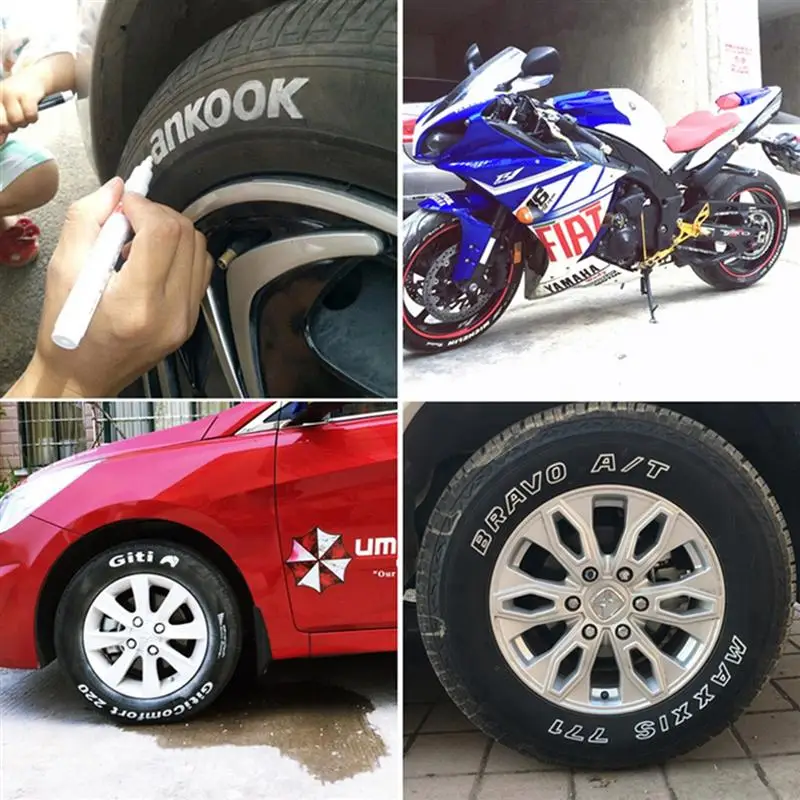 For example, a white vehicle needs a different approach than a car with darker paint.
For example, a white vehicle needs a different approach than a car with darker paint.
We have you covered. Below are the six ways to get tire marks off the car without ruining the paint or damaging the exterior.
Many people wonder if a magic eraser is safe for use on a car's paint. It is, and we love it as one of the most versatile cleaning tools for the interior or glass of the car.
It is highly effective, but scrubbing too hard can cause some paint to fade. Avoid using too much pressure when rubbing tire marks with this eraser.
First, spray a lubricant on the area and let it settle for a few seconds. After this, you can softly rub the area with the magic eraser, and the marks will come right off.
WD-40 qualifies as a multi-use product and can fix many problems with your car. This product can also work as a lubricant to combine with another method.
For example, spraying an area with tire or scuff marks with WD-40 and then using a magic eraser in the area works well. However, sometimes the WD-40 is quite strong, so combining it with a magic eraser is too powerful.
However, sometimes the WD-40 is quite strong, so combining it with a magic eraser is too powerful.
The safest method is to try WD-40 and a soft cloth first. If you struggle to remove the scuff marks, try increasing your power with a magic eraser.
Scuff marks and other tire marks can be a real pain to remove from your car. But there is a simple solution that will make it easy for you to remove them.
Another effective way to remove scuff and tire marks is using a cloth and mild soap. You should use the cloth to wipe them off in an up-and-down motion, then use the soap on the cloth to get rid of any remaining residue.
Many beginners try this method first to see how serious the tire marks are. If it fails, then they upgrade to a more advanced removal method.
Goo Gone is one of the best adhesive removers to try on your car’s exterior. It works as an effective stain remover on many different surfaces, including cars and car paint.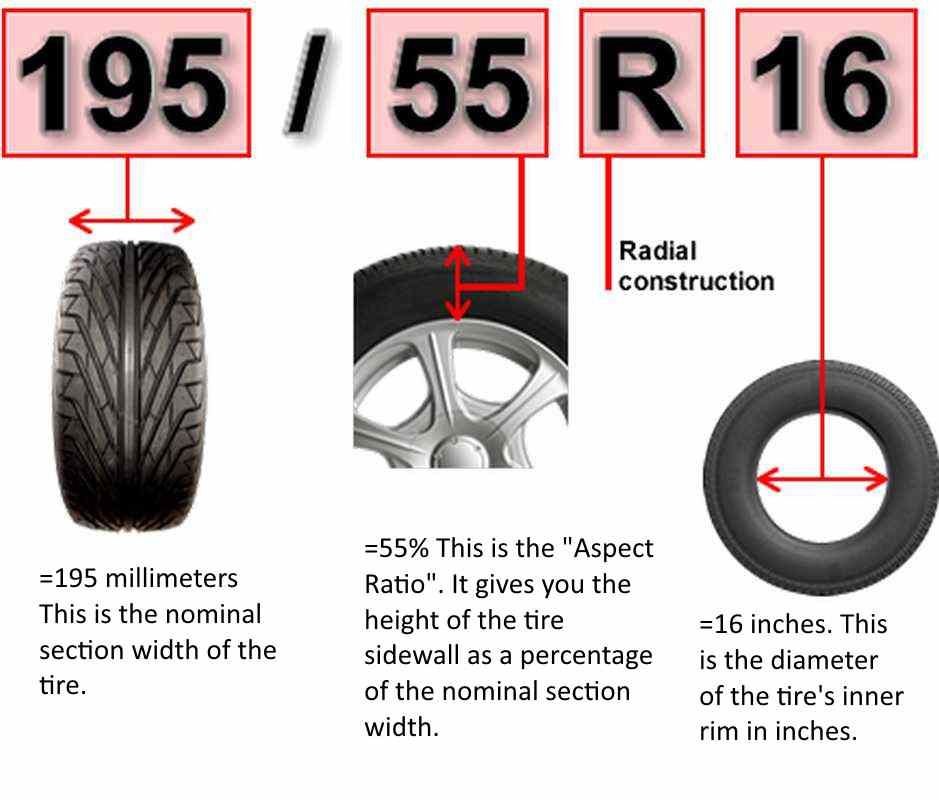
Many people fear using a product that might damage their paint, but Goo Gone is safe for cars. It won't remove the paint but will remove scuffs and scratches from it.
This works best for other sticky materials on the car’s surface too. So if the tire marks on your vehicle also include rubber pieces, this is an effective solution.
If you want to remove the scuff marks on your car, you can try using a product like Racing Rubber Remover.
This product is an all-in-one cleaner that will remove scuff marks, tire marks, and rubber marks from the exterior of your car. You only need to spray the product on the area you want to clean and wipe it off with a cloth.
It is incredibly safe for your car’s paint too. Using a microfiber cloth with this remover is the most effective method.
If you want to remove scuff marks, tire marks, and other stains from your car by hand, then you can do so with the help of a polish and wax compound.
Not only is it a great way to get rid of these marks, but it will also add a shine to your car. It works as a two-step process to remove any deformities.
Polish and wax compounds are usually applied by hand, but you can also use an automatic polisher for faster results.
With the growing popularity of car shows, car enthusiasts are always looking for a way to make their cars stand out from the rest. One of the ways that they can do this is by adding custom paint jobs to their vehicles.
When you have a car, you should always take care of its paint and make sure it is in good condition. But things can happen, and if you have ever been in an accident that resulted in tire marks left behind on your car, you understand.
Tire marks are not a cause for concern regarding the condition of your car's paint. But when cleaning them off, you need to know what to use to avoid damaging the paint.
Black rubber tire marks on a white car can be tough to remove. There are a few different ways to remove them, but the most common is using a rubbing compound.
There are a few different ways to remove them, but the most common is using a rubbing compound.
This can either be WD-40 and a rag or a magic eraser. But ultimately, it depends on how deep the tire marks are on the car's exterior. White paint can get stained easier, too, so you want to avoid any harsh chemicals.
Start by using basic soap, water, and a soft rag first. This is the easiest method but it tends to struggle with most tire marks on white cars.
If this fails, try using the magic eraser method next. However, if there are scratches where the tire mark happens, then the magic eraser will not provide the results you are looking for for the perfect finish.
This is where you can opt for WD-40, polish and wax, or a more durable rubbing compound. This can be used with the magic eraser as a multi-step process for the best results.
Tire marks can be a real eyesore on the interior of a car too. Whether it is from an accident or just from regular wear and tear, it is always best to remove them as soon as possible.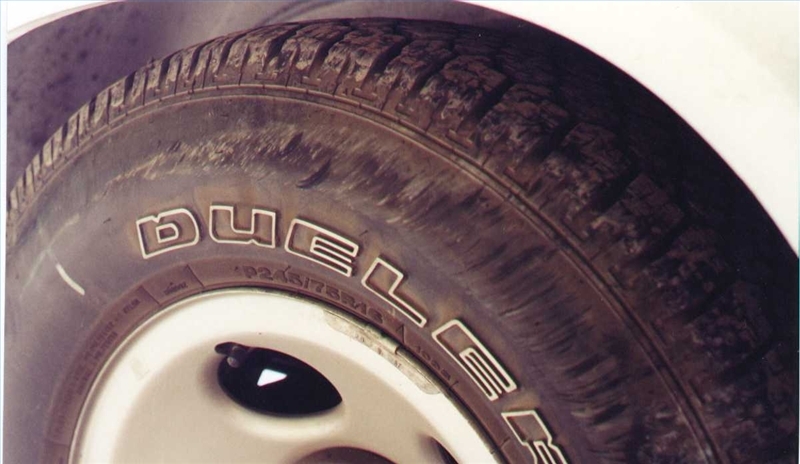
This will vary based on whether you have cloth or leather seats too. Cloth seats are easier to clean compared to leather seats.
This is because leather seats are delicate. You should only use a chemical-free stain remover, soft towel, and professional leather conditioner solution.
Typically, your vehicle will have a recommended product. Start by using a small amount on one seat area to see if it reacts as expected with your leather seats.
If so, you can wet your sponge or towel with the stain remover and begin softly rubbing the areas with tire marks. Be gentle while doing so.
Next, rinse your sponge or towel with warm water. Allow time for the seat to dry, and gently use the dry towel to wipe it down.
After it dries, you can use the leather conditioner in the same areas. This will apply a shine to the seats again and help eliminate any residue still on your seat.
Having those ugly black tire marks on your car can be annoying, especially if they won’t come off when you hit it with a power washer.
So, how do you get those black marks off your vehicle without ruining the paint? It’s tricky, doing it wrong can ruin your paint, so keep reading to learn the proper method!
With the right rubbing compound and some smooth crafty hand or wheel polishing, you can remove tire marks without leaving any paint damage behind. With a quick trip to the parts store for some common inexpensive items, you will be able to remove tire marks, bird droppings, and other problematic paint scares.
If you’d like to learn how to remove tire marks from your car as well as other related facts, keep reading for more tips and information!

Whether from a bike tire, bike handlebars, a basketball, or anything else that might leave some nasty scuff marks, getting them out can be a little challenging.
Most of the time, WD-40 and a lint-free cloth with some texture to it can do the trick. However, remember to use a circular motion when rubbing against the vehicle.
WD-40 could be a temporary fix for very particular events, but they don’t remove scratches. Rather, WD-40 can hide scratches as long as it’s not wiped off.
Rather, WD-40 can hide scratches as long as it’s not wiped off.
In fact, with one good wash or rain, all the scratches that seemed to disappear from WD-40 will reappear when it’s washed off.
Rubber marks and rubber scratches are different, and therefore must be removed differently.
Rubber marks are left on top of the paint, meaning you need to get rid of the mark and clean the area.
Rubber scratchers, however, are underneath the rubber mark. To cover these scratches, drivers can use WD-40, but will have to use some type of waxed compound to get underneath the clear coat and rub out the scratch.
After you have compounded the area and removed the scratches, you’ll need to wax in some protected polish over the compounded area to bring back the shine.
While Magic Erasers do a good job on car interior goo and grime, do not use one on the exterior of your vehicle.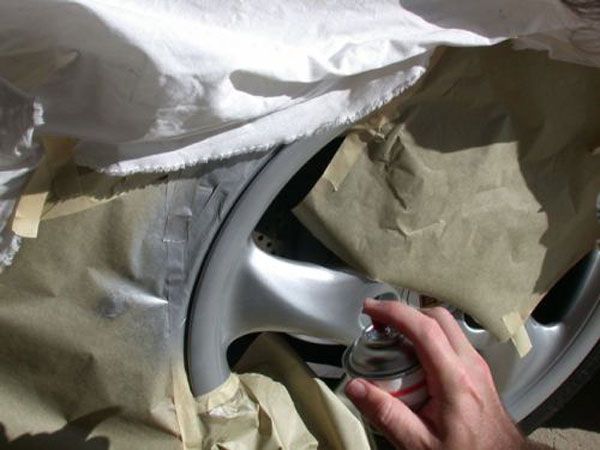
The Magic Eraser’s coarse abrasiveness will ruin your vehicle’s paint job, which will add additional repairs to your vehicle.
Goo Gone will work for removing tire marks, road grime, and other nasty car problems. However, this is a heavy solution, so make sure you use it with soap and water.
Rubbing alcohol is far too potent to use alone, and must be diluted between 10-percent and 15-percent before it can be applied to a vehicle’s paint.
Without this dilution, the full potency of rubber alcohol will surely ruin, if not remove, the paint on your vehicle. Also, rubbing alcohol should never be used on freshly painted vehicles (which goes for all other heavy cleaning agents).
To learn more, you can also read our posts on how to clean whitewall tires, if you can spray paint hubcaps, and homemade tire shine.
There are a lot of cleaning agents out there that work hard at helping you get tire marks and other rubber, gooey substances off your car’s paint. If done the right way, you will not only get the substances off the paint, but you won’t leave any permanent damage behind.
If done the right way, you will not only get the substances off the paint, but you won’t leave any permanent damage behind.
However, Make sure you read the directions and know what the best practices are for getting rid of the marks on your car without ruining the paint.
90,000 here are you yourself (and you can’t) - the magazine for the wheel ofLADA
UAZ
KIA
Hyundai
Renault
Toyota
Volkswagen
Skoda
Nissan
BM -Benz
Mitsubishi
Mazda
Ford
All brands
Most often, we ourselves are to blame for the fact that tires become unusable. But this can be avoided.
Related materials
You have never seen such tires: even the police were surprised
In the process of using a tire, a variety of damages can occur, most of which are the fault of the driver. As a result, rubber is wasted, and since the law prohibits the use of different tire models on the same axle, you have to spend money on replacing the second tire.
The most common damage is puncture . This is the most harmless type of damage, but only if you notice it in time and repair it right away. It is absolutely impossible to drive on a flat tire, even a couple of meters! The damage caused by running on a flat tire or with low pressure is catastrophic. This causes the sidewalls to deform more than they should, which causes the tire to overheat, delaminate, and the carcass becomes unusable due to broken cords. As a result, the tire will have to be thrown away. In addition, the edge of the rim can also be damaged. nine0003
Punctures are of two types: with and without cord damage. To determine this, it is necessary to remove what pierced it. If the edges of the puncture tightly converge, then the cord is not damaged and it will be possible to repair the tire without removing it from the disk. Otherwise, if the edges do not converge, you will have to disassemble the wheel and make repairs with strengthening the frame from the inside.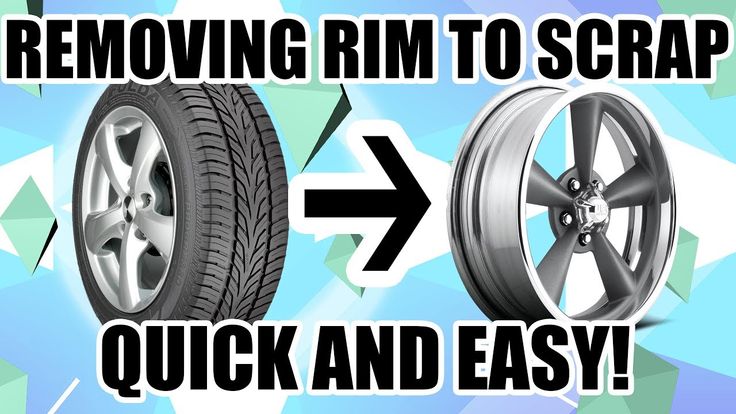 Alternatively, in the field and in the absence of a spare wheel, such a puncture can be repaired without removing the tire from the rim, after which you can carefully drive to a tire fitting or garage and make a full repair. nine0003
Alternatively, in the field and in the absence of a spare wheel, such a puncture can be repaired without removing the tire from the rim, after which you can carefully drive to a tire fitting or garage and make a full repair. nine0003
Related materials
Is it possible to pump up a wheel without a compressor - the experiment "Behind the wheel"
When repairing, the puncture site should be cleaned and marked. Further, it all depends on what kind of repair kit you have - as a rule, instructions are attached to them. There are sealants that are poured into the tire through the nipple, after which the wheel turns with the puncture down and the substance seals the hole. Repair using a tourniquet or insert is somewhat more complicated, but also more durable: the edges of the hole are polished with a special tool, after which the tourniquet treated with a special compound must be inserted into the tire through a puncture with a special awl, pulled out (not completely) out and cut flush with the surface. nine0003
nine0003
In case of damage to the cord due to a puncture, the tire must be removed from the rim in order to install a reinforced patch with an additional cord on its inner surface. One of the sides of such patches has an adhesive layer that promotes cold vulcanization. After such a repair, wheel balancing will be required. To seal punctures from the inside, patches in the form of a mushroom are also used, with a leg that goes into the puncture. Such patches are also covered with a special adhesive for cold vulcanization. nine0003
Cuts or holes , unlike punctures, are not repairable, as they violate the integrity of the frame, which can no longer be strengthened. In addition, breakdowns are always sudden and occur on the go: the tire abruptly loses pressure and before the car comes to a complete stop it has time to make several revolutions “on the rims”, which breaks the cord and destroys the layers. It is not recommended to use such a weakened tire, even if it was possible to repair and strengthen the place of the rupture or cut, in the future.
Related materials
8 tire storage rules - do you follow them all?
Incorrect storage of tires can cause cracks . The danger of such damage is that moisture enters the cord through cracks, which renders the frame unusable. In addition, air can escape through cracks. Unfortunately, cracks are not repairable, and tires with them will not last long: sooner or later they will deform, become covered with swellings due to rusted and torn cord or because of driving with pressure below the recommended one. nine0003
Blisters or bulges can appear on a tire for a variety of reasons - it always happens due to a broken cord or delamination in the carcass. In the first case, an obstacle was hit and the impact broke the cord or the cord was cut through with a sharp object. In the second case, there is no damage on or near the hernia, which means that it appeared either due to a factory defect, or due to frequent driving with pressure below the recommended one. The danger of hernias is that they can explode at any moment and provoke a skid, which will lead to an accident. If there is nothing to replace a tire with a hernia, then it is better to rearrange it to the rear axle and drive very carefully. Like cracks, a hernia cannot be repaired. Sometimes small blisters resulting from impacts or cuts are reinforced with reinforced patches, but there is no guarantee that the tire will not explode. Therefore, tires with hernias are recommended to be replaced immediately. nine0003
The danger of hernias is that they can explode at any moment and provoke a skid, which will lead to an accident. If there is nothing to replace a tire with a hernia, then it is better to rearrange it to the rear axle and drive very carefully. Like cracks, a hernia cannot be repaired. Sometimes small blisters resulting from impacts or cuts are reinforced with reinforced patches, but there is no guarantee that the tire will not explode. Therefore, tires with hernias are recommended to be replaced immediately. nine0003
Related materials
Tire blackening - 6 ways to polish. Inexpensive!
Tire sidewalls can be damaged by rubbing against curbs or the asphalt edge when pulling over. If you are prone to such a driving style, then it is recommended to inspect the inner and outer sidewalls from time to time and, if abrasion is found, swap the wheels in order to prevent the cord from being exposed - the rubber thickness on the sidewalls is small (1. 5–3 mm), and it can be rubbed to the frame very quickly. nine0003
5–3 mm), and it can be rubbed to the frame very quickly. nine0003
Often the cause of tire damage can be poor-quality tire fitting , during which the bead ring was damaged. In this case, the tire loses its geometry and “sits” crookedly on the disk - it writes out “eights” during rotation, and lateral vibration appears during the ride. It is impossible to repair such a tire - you need to replace it with a serviceable one as soon as possible before it damages the suspension: rods, hubs and bearings.
You can find out whether you are using tires correctly and what invisible damage they have received by the characteristic wear of the tread, the varieties of which are collected in the table for convenience:
Double side shoulder wear
Driving with lower than recommended tire pressure.
Inflate the tires to the pressure recommended by the automaker (a plate with recommendations is attached in the driver's door opening) and find the cause of the fall: puncture, cracks, hernia, nipple, rust on the disc rim in the place where the tire fits, etc.
Center wear
Tire pressure too high.
Reduce the pressure to the recommended (indicated on the tablet in the driver's doorway)
In the form of rings and furrows
can be found on trailers or rear wheels of pickups and vans due to vibrations and vibrations and vibrations due to vibrations and vibrations bouncing at high speeds.
Changing wheels on a loaded axle to equalize wear, driving with a heavier load. nine0003
Chipped wear with cuts
Frequent wheel spin on rocky surfaces.
Move the wheels to a non-driving axle, use the gas pedal more carefully when starting to move.
Photo: Petr Urbanek / Unsplash
Our new video
Test of Haval Dargo and Mitsubishi Outlander (video)
The story stopped there: test of the last Volga
5 meters, 9 seats, boosted engine.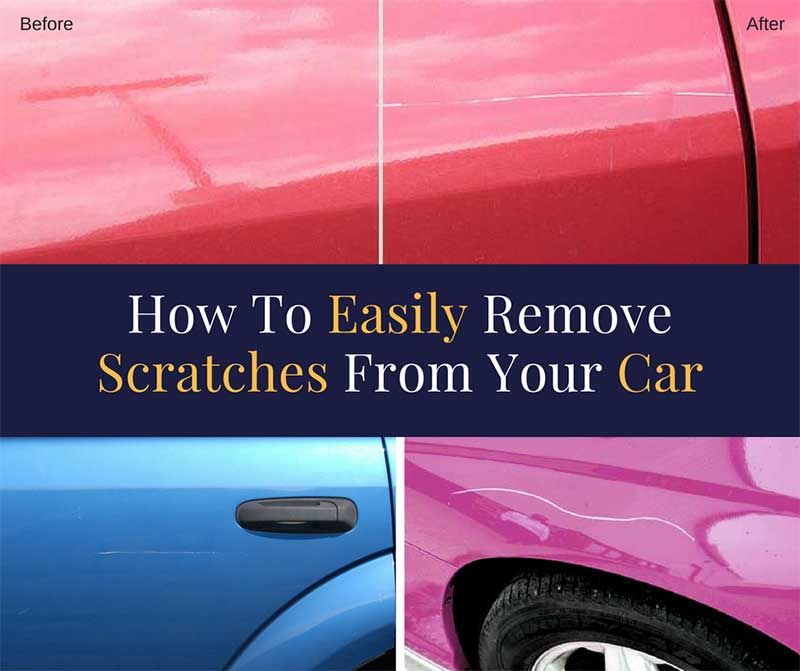 .. — is this Lada? Yes!
.. — is this Lada? Yes!
Did you like the note? Subscribe and you will always be in the know!
Driving in Zen
News smi2.ru
A scuff on the body after a small accident, although it “does not affect the speed”, but it greatly spoils the mood of any car owner. For those who want to drive a beautiful car, but do not want to spend time and money on repainting an entire body element, the following advice may come in handy.
Maxim Stroker
Let's make a reservation right away that when the paintwork is torn to the metal or the plastic of the bumper is cracked, you can't get by with any cosmetics, there is a direct road to a car service. But if only the top layer of paint is damaged in a traffic accident, the damage itself is relatively small in size, the use of “light artillery” is quite justified.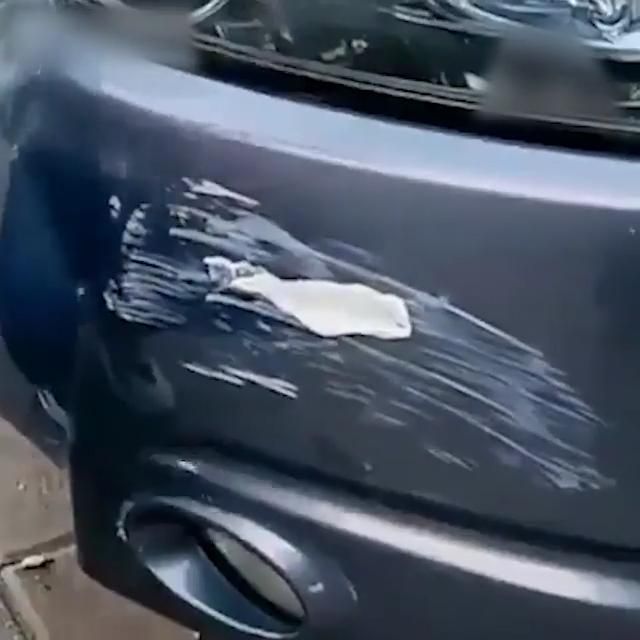 nine0003
nine0003
You don't want to get your hands dirty - you can go to a car service and order polishing of a damaged body element. But it will cost money and take a certain amount of time. The second option is to polish the scuff yourself. You will first have to attend to the purchase of polishing auto chemicals and a special fabric, or “pads” for polishing. It will cost less than the services of a professional polisher, but it will still require some financial outlay.
But there is an alternative and almost free way to remove minor damage to car paint - with a few drops of brake fluid. To use it, you only need a little tap water and any clean, soft cloth.
Before proceeding with the actual removal of scratches, we rinse the place of future restoration work with water to remove dirt, grit and dust that are always present on the body.
If this is not done, during our impromptu "brake" polishing, we will cause additional scratches with these particles. After washing the area of paint with water, let it dry completely and proceed directly to the elimination of scuffs.